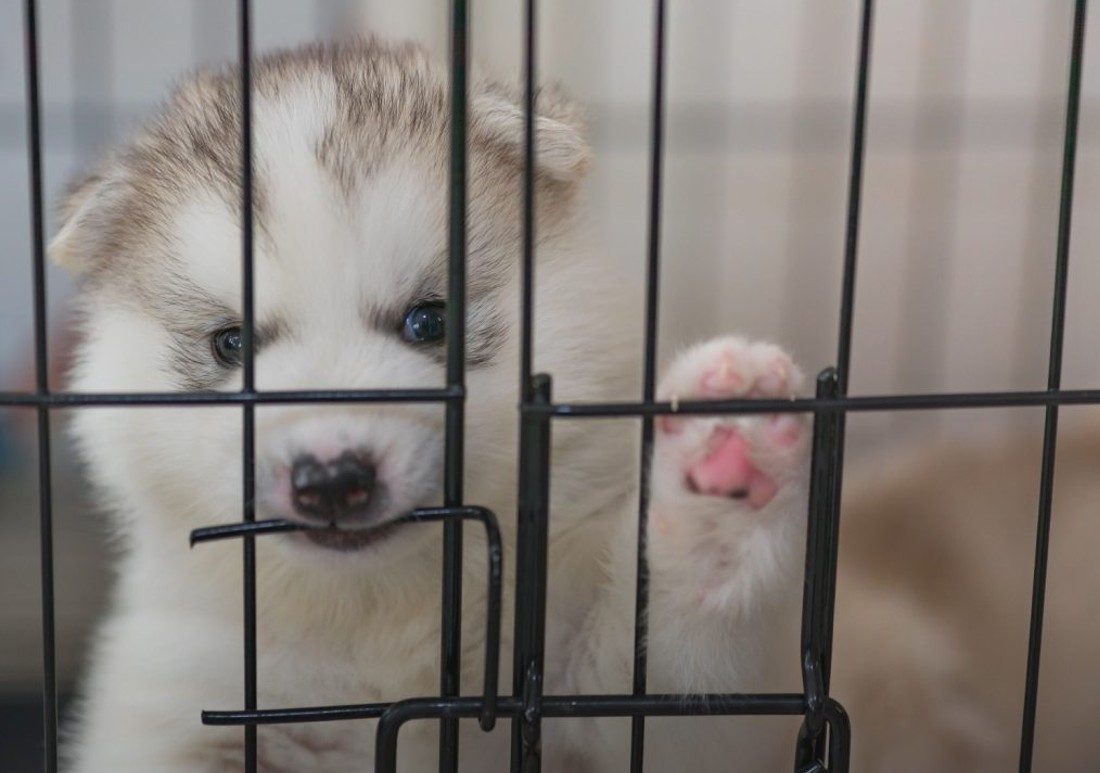Goodbye Sleepless Nights: Here’s How to Crate Train a Puppy at Night

The arrival of a new puppy into your home is an exciting and heartwarming experience. You eagerly await the joy and companionship this furry addition will bring to your life. However, amidst the puppy snuggles and playtime, there’s one aspect that can be a bit challenging—getting your puppy to sleep through the night.
Sleepless nights are a common struggle for many new puppy owners, but there’s a solution: crate training. In this comprehensive guide, we’ll walk you through the ins and outs of crate training your puppy at night, ensuring both you and your four-legged friend get the peaceful rest you deserve.
The Importance of Crate Training
Crate training is a valuable tool for helping your puppy adjust to their new environment, establish a routine, and learn essential potty training skills. A dog crate also provides a safe and comfortable space where your puppy can relax and sleep. When done correctly, crate training can make nighttime sleep more manageable, reducing the chances of disruptive behavior and accidents.
Choosing the Right Crate
Selecting the appropriate crate is the first step in successful crate training. Ensure the crate is just the right size – not too small that it’s uncomfortable for your pup, and not too large that they have extra room to roam. The goal is to create a cozy den-like space that makes your puppy feel secure.
Introducing Your Puppy to the Crate
Before diving into nighttime crate training, start with a positive crate introduction during the day. Leave the crate open, place some toys and treats inside, and allow your puppy to explore it at their own pace. This helps create a positive association with the crate, making it a welcoming space.
Establishing a Bedtime Routine
Consistency is key when crate training. Set a regular bedtime routine that includes feeding, a final bathroom break, and some playtime. By following the same routine each night, your puppy will learn to associate these activities with bedtime.
Bedtime in the Crate
When it’s time for bed, gently guide your puppy into the crate. You can use treats or toys to encourage them to enter willingly. It’s essential not to force your puppy into the crate or make it feel like a punishment. Initially, leave the crate door open, so your pup doesn’t feel trapped. Allow them to explore and get comfortable with their new sleeping quarters.
Handling Nighttime Whining
It’s common for puppies to whine or cry when they’re first introduced to crate training at night. This is their way of expressing anxiety or discomfort. It’s important to resist the urge to let them out or provide attention during this whining, as it may reinforce the behavior.
Gradual Crate Time
Start with short periods of crating during the night and gradually extend the duration. This approach helps your puppy adjust to staying in the crate for more extended periods. Remember, puppies have small bladders, so nighttime bathroom breaks may be necessary, especially for younger pups.
Bathroom Breaks
Be prepared for nighttime bathroom breaks, especially for puppies under six months of age. They may need to relieve themselves during the night. Take them out to their designated potty spot and be sure to keep the trip low-key to avoid stimulating playtime.
Nighttime Comfort
Make the crate as comfortable as possible. Use soft bedding, but be cautious with any bedding that could pose a choking hazard or get ingested. Providing a familiar toy can also help soothe your puppy. Keep the crate in your bedroom at night, so your puppy feels your presence, which can reduce their anxiety.
Avoiding Punishment
If your puppy has an accident in the crate or whines at night, avoid punishment. Positive reinforcement and a calm, patient approach work best for crate training. Punishment can create fear and anxiety, making the training process more challenging.
Morning Routine
When morning arrives, be ready to take your puppy outside for a bathroom break. They will likely need to relieve themselves after a night’s sleep. Use praise and rewards to reinforce their good behavior.
Staying Consistent
Consistency is crucial for successful crate training. Stick to your routine, and gradually extend the crate time as your puppy becomes more accustomed to it. With time and patience, most puppies will learn to sleep peacefully through the night.
Conclusion
Crate training a puppy at night may require some initial effort and patience, but the long-term benefits are well worth it. A well-trained puppy is a happy puppy, and a well-rested owner is a happy owner. Crate training not only helps your puppy adjust to their new home but also provides them with a safe and comfortable space. With consistent training, positive reinforcement, and a loving approach, you and your puppy can say goodbye to sleepless nights and hello to restful, peaceful slumber.
Your Pet’s Best Interest, Always
At Pet Institute, we take pet care seriously. We're dedicated to transparency, impartiality, and the well-being of your pets in every article, review, and recommendation we provide. Our unwavering commitment to these principles ensures that you, our valued reader, always receive reliable and unbiased information. Let us be your trusted guide in the world of pet care and companionship.